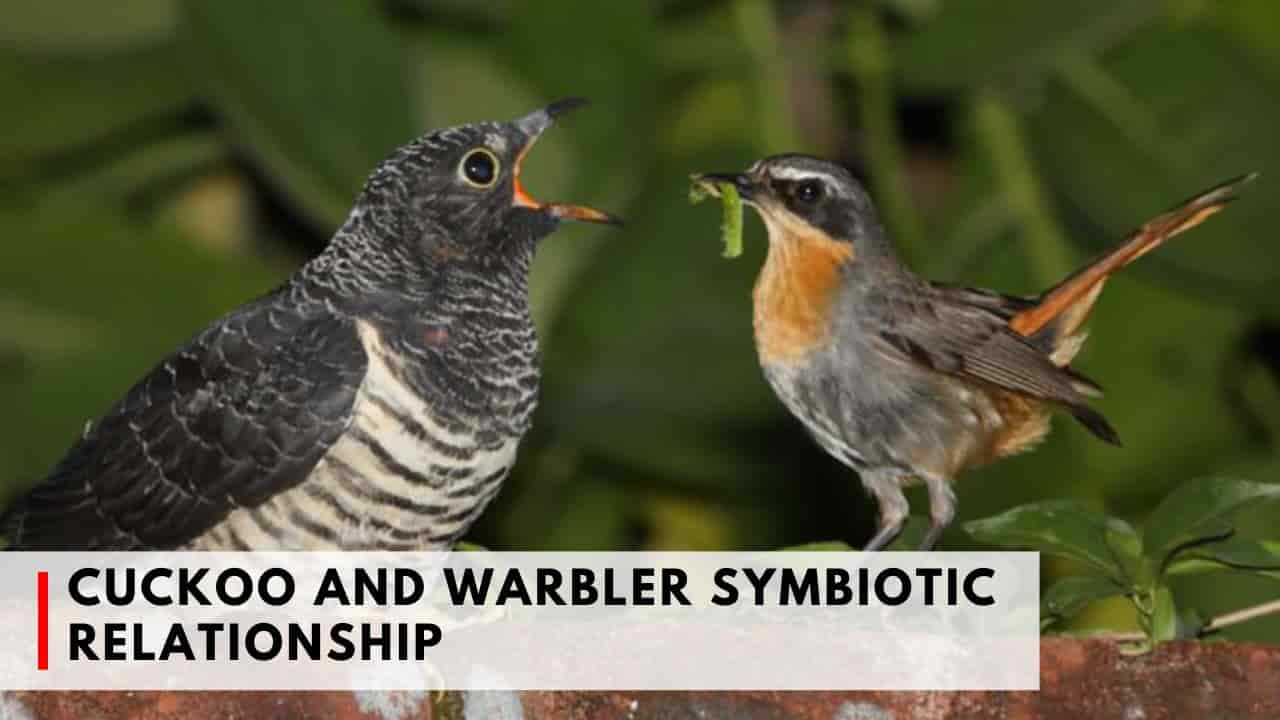Cuckoo and Warbler Symbiotic Relationship
Cuckoo and Warbler Symbiotic Relationship – The natural world is rife with fascinating interactions between different species, each with its own unique tale of survival and adaptation. One such captivating story unfolds in the avian realm, where the cuckoo and the warbler engage in a complex symbiotic relationship. In this article, we delve into the intricacies of the cuckoo and warbler symbiotic relationship, exploring the dynamics, behaviors, and evolutionary marvels that underlie this extraordinary connection.
Understanding Symbiotic Relationships

Before we delve into the specific bond between cuckoos and warblers, it’s essential to grasp the concept of symbiotic relationships. Symbiosis is a biological phenomenon where two distinct species interact with one another, often resulting in some form of dependence. These interactions can be categorized into three main types:
- Mutualistic Symbiosis: This occurs when both species involved benefit from the relationship. For instance, acacia trees and stinging ants engage in mutualistic symbiosis, where ants receive food and shelter from the trees, while the trees gain protection from other insects.
- Parasitic Symbiosis: In this type of relationship, one species benefits at the expense of the other. Parasitoid wasps, for example, lay their eggs inside host insects, gradually consuming them from the inside as their larvae hatch.
- Commensal Symbiosis: Here, one species benefits, but the other neither gains nor loses from the interaction. An example of commensal symbiosis is the relationship between liparid fish and stone crabs, where the fish hitch a ride on the crab’s shell without impacting the crab’s well-being.
With this understanding, we can now explore the remarkable connection between cuckoos and warblers.
The Fascinating World of Cuckoos and Warblers
It’s important to note that not all species of cuckoos engage in the same symbiotic relationship with other birds. Many cuckoo species construct their own nests and raise their young, following a conventional avian parenting approach. However, some cuckoo species have evolved a different strategy, one that involves a unique form of brood parasitism.
Brood Parasitism: This is the crux of the relationship between cuckoos and warblers. In brood parasitism, the mother cuckoo locates the nests of other bird species, particularly warblers in many regions of the world, and surreptitiously lays her eggs in these nests. What follows is a complex series of events that highlight the intricacy of nature’s design.
When a mother cuckoo selects a host nest, she often expels the warbler mother from the nest or waits for her to leave on her own. Once the nest is vacant, the cuckoo lays a single egg among the warbler’s clutch.
Here is where the story takes a remarkable twist. The mother warbler, upon her return, fails to recognize the foreign egg amidst her own. She proceeds to incubate the cuckoo egg along with her own, treating it as part of her brood.
The Great Cuckoo Deception
As the days pass, the cuckoo egg hatches and the tiny cuckoo chick emerges into the world. At this stage, the warbler mother’s deception deepens. She tirelessly cares for and feeds the growing cuckoo chick alongside her biological offspring, completely unaware of the intruder in her nest.

What makes this relationship even more intriguing is the sheer difference in size between cuckoo chicks and warbler eggs or hatchlings. Young cuckoos are notably larger and more robust than their warbler counterparts. To secure their place in the nest, cuckoo chicks employ a remarkable tactic. They use their strong legs and backs to forcibly eject warbler eggs and young from the nest, ensuring that they receive all the food and attention from the mother warbler.
This act of eviction is a survival strategy honed through millennia of evolution. By monopolizing the care and resources provided by the warbler, the cuckoo chick increases its chances of survival and thriving, ultimately securing the continuation of its species.
The Parasitic Aspect of the Symbiosis
In the realm of symbiotic relationships, the cuckoo and warbler partnership falls firmly under the parasitic category. It’s important to note that the warbler is the sole victim in this relationship. All of the mother warbler’s biological eggs and young are ruthlessly eliminated from the nest, leaving her to raise the voracious cuckoo chick as her own.

The question that often arises is, why do warblers continue to care for cuckoo chicks even after losing their own offspring? The answer likely lies in the warbler’s inability to distinguish between the cuckoo chick and her own young. This lack of recognition may explain why cuckoos frequently choose warblers as their host birds. Many other bird species possess the ability to discern the differences and would readily abandon a foreign chick in their nest.
Conclusion: A Complex Dance of Deception
In the intricate world of nature, the cuckoo and warbler symbiotic relationship serves as a prime example of brood parasitism. This extraordinary bond highlights the lengths to which evolution has shaped these birds’ behaviors, allowing cuckoos to exploit the nurturing instincts of warblers to propagate their own lineage.
While the warblers unknowingly play host to cuckoo chicks, they do so at their own expense. Despite the parasitic nature of this relationship, it serves as a testament to the wonders of the natural world, where adaptation, deception, and survival are woven together in a complex dance of life.
In the end, the cuckoo and warbler symbiotic relationship offers a profound glimpse into the endless marvels of nature, where even the most unlikely partnerships can result in evolutionary success.
Also Read,
- Chai Komanduri Wikipedia, Nationality, Wife, Net Worth, Ethnicity, Age, Biography
- Did Lefty SM Die? Wikipedia, How, When Cause of Death
- Tony Guccione Wikipedia
What type of symbiotic relationship is a cuckoo and warbler?
The symbiotic relationship between cuckoos and warblers is classified as parasitism. Cuckoos are considered brood parasites, meaning they lay their eggs in other birds’ nests. In this relationship, one species benefits (the cuckoo), while the other is harmed (the warbler), as the warbler unwittingly raises cuckoo chicks alongside its own offspring.
What is the symbiotic relationship of the cuckoo?
The symbiotic relationship of the cuckoo is that of a parasitic nature. Cuckoo birds lay their eggs in the nests of other bird species, tricking these birds into raising cuckoo chicks as their own. This strategy allows cuckoos to receive more food and care while their host species unwittingly shoulders the responsibility of nurturing the cuckoo chicks.
What is the symbiotic relationship between cuckoo and warbler without predators?
In the absence of predators, the relationship between warblers and cuckoos can still be defined as parasitic symbiosis. This is because the fundamental nature of the interaction remains unchanged. Cuckoos lay their eggs in warblers’ nests, and the warblers, often unable to distinguish between the cuckoo egg and their own, raise the cuckoo chicks. The relationship is still characterized by one species benefiting (the cuckoo) and the other being harmed (the warbler), even in the absence of external predators.








